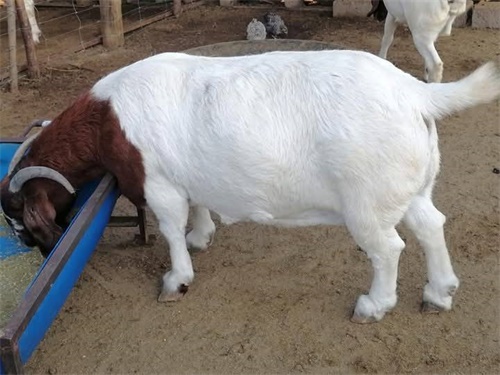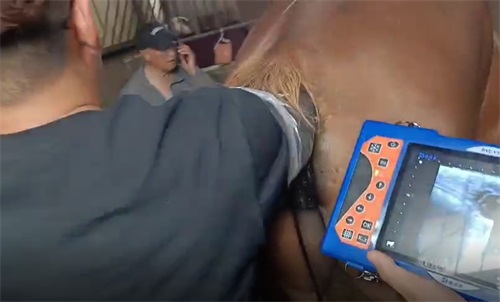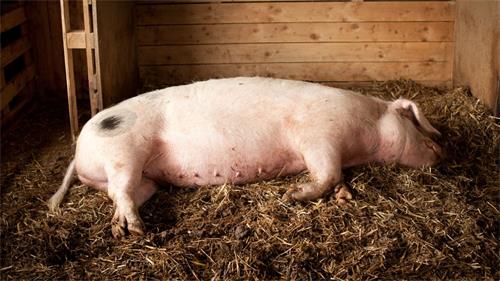As a modern swine producer, ensuring the health and viability of piglets during gestation is one of the most critical responsibilities on the farm. High fetal survival directly affects litter size, productivity, and the overall profitability of swine operations. Over the past two decades, real-time ultrasound imaging—especially B-mode (brightness mode) scanning—has become the gold standard in reproductive monitoring. Used routinely in both small- and large-scale operations around the world, ultrasound offers a reliable, non-invasive, and real-time method to assess fetal viability throughout pregnancy in sows and gilts.
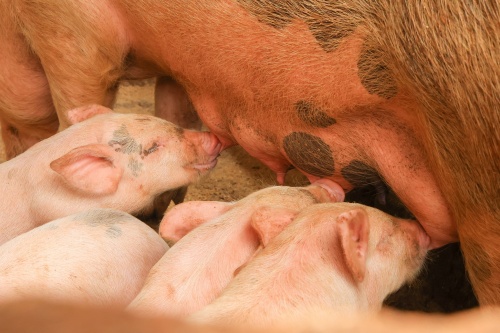
This article explores how real-time ultrasound imaging is used to evaluate fetal viability in swine, drawing on both global scientific understanding and practical applications in international pig farming. From early pregnancy detection to monitoring fetal development and identifying abnormalities, ultrasound plays a pivotal role in modern reproductive management.
The Role of Ultrasound in Swine Reproduction
Ultrasound in swine production is primarily employed for three purposes: pregnancy detection, evaluation of fetal development, and assessment of uterine health. While many swine producers are familiar with using ultrasound to confirm pregnancy at around 25 days post-insemination, fewer may be aware of the technique’s potential in monitoring fetal viability throughout gestation.
In countries like Denmark, the Netherlands, and the United States—leaders in intensive pig farming—ultrasound scanning has evolved beyond a simple "yes or no" pregnancy check. Veterinarians and producers now use it to measure fetal heartbeat, observe fetal movements, evaluate amniotic fluid, and detect early signs of embryonic or fetal death.
Understanding Swine Gestation and Key Monitoring Windows
Swine gestation lasts approximately 114 days, typically divided into three 38-day trimesters. Each stage presents different challenges and monitoring opportunities:
Days 0–30 (Embryonic Period): During this period, embryonic development is vulnerable to stress, hormonal imbalance, and nutritional deficiencies. Embryonic loss is common and may go unnoticed without ultrasound.
Days 30–75 (Early Fetal Development): Organs begin forming, and fetal heartbeat becomes detectable. This is the optimal window to confirm viability using ultrasound.
Days 75–114 (Late Fetal Development): Growth accelerates, and signs of fetal compromise or intrauterine stress may appear. Regular monitoring here ensures any interventions are timely and effective.
Real-time B-mode ultrasound provides detailed grayscale images that allow skilled veterinarians to interpret multiple indicators of fetal health. In some practices, Doppler ultrasound may also be used to visualize blood flow, although it is less common on commercial pig farms due to cost.
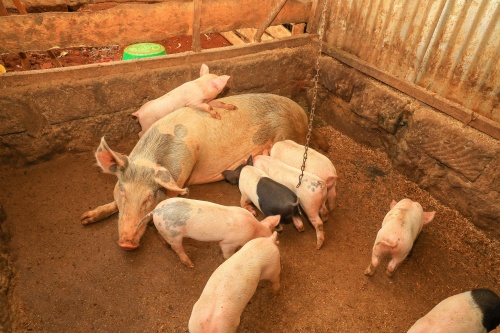
Key Ultrasound Indicators of Fetal Viability
When assessing fetal viability, veterinarians and technicians focus on several ultrasound parameters:
Fetal Heartbeat Detection
By day 24–26 post-insemination, fetal cardiac activity can be identified using B-mode ultrasound. A regular, rhythmic heartbeat confirms fetal life. The absence of a heartbeat in a previously confirmed pregnancy may indicate fetal death or early resorption.Fetal Movement
In later stages (after day 50), spontaneous or probe-induced fetal movements are visible. Healthy fetuses respond to pressure or changes in probe angle. Lack of movement in multiple fetuses could signal hypoxia or intrauterine stress.Amniotic Fluid Quality
The clarity and quantity of amniotic fluid can reflect intrauterine conditions. Cloudy or decreased fluid may indicate infection or fetal deterioration. In high-performing swine farms, such as those in Germany and Canada, abnormal fluid patterns are taken seriously and may lead to early intervention or culling decisions.Fetal Size and Growth Trajectory
By repeatedly scanning the same sow, veterinarians can track fetal crown-rump length (CRL) and skull dimensions to assess development consistency. Stunted growth or disproportionate sizes among littermates may suggest underlying problems like intrauterine growth restriction (IUGR).Placental Health and Uterine Environment
Though harder to evaluate, trained operators can sometimes observe placental thickening, detachment, or abnormal masses. These are red flags for abortion or reduced viability.
International Perspectives and Practical Adoption
In developed swine-producing nations like the U.S., Canada, and Spain, ultrasound use has become routine. According to the American Association of Swine Veterinarians (AASV), over 70% of medium-to-large swine operations use some form of ultrasound for reproductive management.
In these regions, real-time ultrasound is typically performed at least twice per gestation: once at 25–30 days to confirm pregnancy and fetal viability, and again at 70–80 days to monitor continued development. Portable, rugged systems like the BXL-V50, which offers up to 7 hours of battery life, are particularly suited for barn conditions, providing clear images without the need for a dark room or complex setup.

In emerging economies such as Vietnam, Brazil, and parts of Africa, adoption is growing but remains limited by training and access. However, NGOs and international development programs increasingly promote ultrasound as part of sustainable livestock improvement strategies. Its role in minimizing reproductive failure—thus increasing output from fewer sows—makes it especially attractive for smallholder operations.
Benefits of Ultrasound-Based Fetal Monitoring
The widespread use of ultrasound for assessing fetal viability brings several measurable benefits:
Improved Reproductive Efficiency: Early identification of non-pregnant or compromised sows allows timely rebreeding or culling, reducing the number of non-productive days.
Reduced Mortality Rates: By detecting intrauterine distress early, veterinary interventions—such as nutritional support or stress reduction—can be implemented to improve fetal survival.
Better Litter Uniformity: Monitoring fetal development helps ensure balanced intrauterine growth, leading to more even birth weights and lower neonatal mortality.
Economic Gains: Preventing one failed pregnancy can save hundreds of dollars in lost productivity, feed, and labor—especially in large operations. In a 2023 study by Iowa State University, ultrasound-aided fetal assessments reduced overall gestation losses by 15%.
Limitations and Operator Dependency
Despite its advantages, ultrasound imaging has limitations:
Operator Skill: Accurate interpretation requires training and practice. Misdiagnosis of fetal death or misinterpretation of fluid patterns can lead to incorrect decisions.
Equipment Cost: While portable units like the BXL-V50 are cost-effective in the long term, initial investment remains a barrier for some producers.
Time and Labor: Scanning each sow takes time, and in large herds, labor constraints may limit frequency or accuracy of assessments.
However, many of these challenges can be mitigated through standardized protocols, proper training, and the integration of ultrasound data into herd management software.
The Future of Swine Ultrasound: AI and Automation
New research is exploring the integration of artificial intelligence (AI) into ultrasound imaging. Companies and universities in countries such as the Netherlands and the U.S. are developing software that can automatically detect fetal heartbeat or estimate fetal age based on image patterns. These systems aim to reduce human error and make ultrasound scanning accessible to less-experienced users.
Additionally, 3D and Doppler ultrasound innovations may become more common in elite breeding programs, helping further refine fetal health assessments and improve genetic outcomes.
Conclusion
Assessing fetal viability in swine using real-time ultrasound imaging is more than a technological advancement—it’s a strategic tool for reproductive success. From early detection of heartbeat to monitoring fluid and growth dynamics, ultrasound helps producers make timely, informed decisions that enhance productivity and animal welfare.
Whether in the intensive farms of Europe or smallholder operations in Asia, this technology is shaping the future of swine reproduction. As accessibility improves and global knowledge spreads, real-time ultrasound is set to become an indispensable part of every swine reproductive program.
References:
Whitaker, D. A., & Smith, E. (2021). Veterinary Ultrasonography in Food-Producing Animals. Journal of Veterinary Imaging.
Iowa State University Swine Research. (2023). “Using Ultrasound for Fetal Monitoring in Sows.” https://www.vetmed.iastate.edu/research/swine-ultrasound
American Association of Swine Veterinarians (AASV). (2022). “Ultrasound Use in Modern Swine Herd Management.” https://www.aasv.org/ultrasound
Danish Pig Research Centre. (2021). “Real-Time Ultrasonography in Swine Reproductive Monitoring.” https://www.pigresearch.dk
PigProgress. (2023). “Fetal Scanning in Sows: Best Practices from Global Producers.” https://www.pigprogress.net/reproduction/fetal-scanning-sows/
link: https://www.bxlimage.com/nw/1261.html
tags: